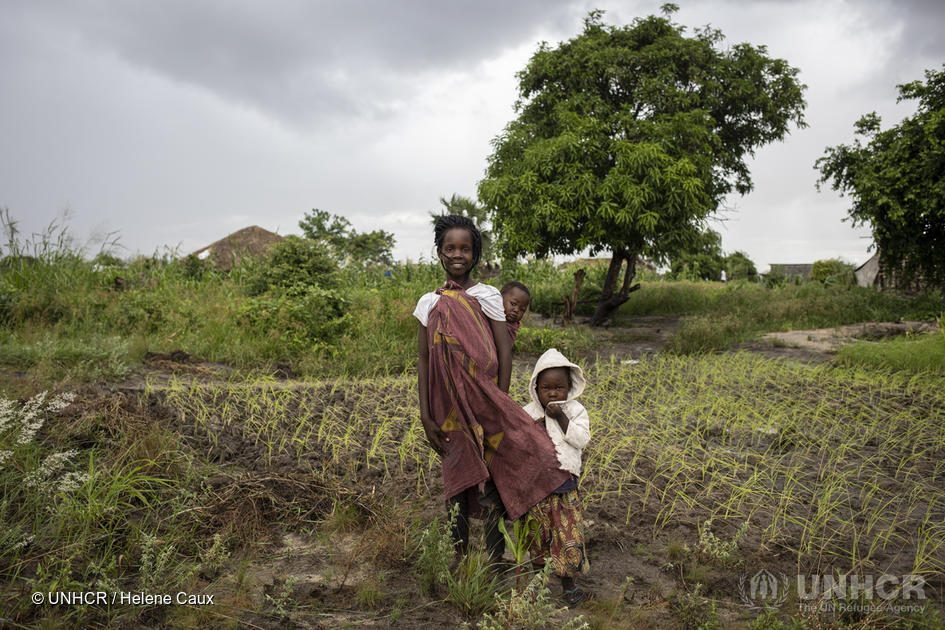
Governments and the United Nations must actively work to prevent and prepare for disasters and the adverse impacts of climate change, and to find sustainable solutions for those who are consequently displaced, according to the Kaldor Centre’s ‘Climate change, disasters and displacement’ project team.
The recently established UN Secretary-General’s High-Level Panel on Internal Displacement is investing long-term solutions to the issue of internal displacement. The Kaldor Centre’s recent submission calls on the panel to ensure that the predicament and protection needs of those displaced in context of disasters and climate change remain front and centre of its work.
This timely submission follows the release of the latest Global Report on Internal Displacement (GRID 2020). The figures included in the report are startling – 24.9 million people worldwide were displaced by disaster in 2019 alone. That’s 75 per cent of the world’s newly displaced, compared to 25 per cent displaced by conflict (8.5 million).
These numbers are all the more startling given the challenges involved in identifying disaster displaced persons – especially in the context of slow-onset disasters such as drought. This means that the true number could be even higher.
The GRID 2020 highlighted again the urgent need for further action to both prevent and respond to displacement in the context of disasters and climate change.
It is against this background that, in December 2019, the UN Secretary-General, António Guterres, established a High-Level Panel on Internal Displacement. The eight-member Panel, supported by an Expert Advisory Group, is tasked with generating recommendations for actions by governments, the UN and others, and finding concrete long-term solutions to internal displacement.
To help inform and guide the Panel’s work, the Kaldor Centre’s submission urges the Panel to:
1. Identify and clarify the scope of disaster and climate change-related internal displacement
Climate change does not cause displacement on its own. Rather, climate change interacts with other factors, amplifying the threats posed by disasters and reducing people’s capacity to cope. Particularly in the context of slow-onset disasters, such as drought and sea-level rise, it can be difficult to identify the ‘tipping point’ at which people feel compelled to move, whether internally or across an international border. We need to identify more clearly the scope of disaster and climate change-related internal displacement, and the relationship between internal and cross-border displacement, to better assist governments and others to pre-empt and plan for movement and solutions.
2. Catalyse and support effective solutions to disaster and climate change-related internal displacement
Traditional ‘solutions’ to displacement, and the assumption that all those displaced by disasters will soon return home, may be ill-fitting in the context of climate change. The GRID 2020 reports that at the end of 2019, at least 5.1 million people remained in internal displacement across 95 countries and territories due to disasters. Where climate change has impacted irrevocably on the habitability of certain areas, returning home may simply not be possible or may lead to further, future displacement. We need to find solutions that not only resolve current displacement, but also avert and minimise future displacement.
3. Engage and integrate and range of actors
In the context of disasters and climate change, measures to prevent and respond to displacement require coordination among a range of actors from the disaster risk reduction, climate change adaptation, land use planning and development sectors. Dealing with displacement in institutional ‘silos’ can squander the expertise and interventions of each sector; conversely, coordinated legal, policy and operational frameworks can improve mutual understanding and promote cohesive, consolidated action on prevention, emergency response and solutions. Ultimately, if we can promote greater awareness among, and better coordination between, relevant actors and agencies, governments will be better able to reduce and address displacement.
4. Strengthen the effectiveness of normative frameworks
There are already a range of normative frameworks dealing with disaster and climate change-related displacement at the international and regional levels. The Nansen Initiative’s Protection Agenda, the Sendai Framework for Disaster Risk Reduction 2015–2030 and the UN Guiding Principles on Internal Displacement are just some of the frameworks and agreements that should guide governments in their responses to internal displacement. We need to encourage governments to uphold these frameworks, and provide technical advice and practical guidance about how to implement them in the context of disasters and climate change, in order to generate effective action on the ground.
Ultimately, work by the High-Level Panel could provide a catalyst for a range of measures that would help assist at-risk populations to stay in their homes where they so desire; to help them to move out of harm’s way where remaining is not possible; and to help people who are displaced to access protection and more sustainable solutions.
The Kaldor Centre’s submission to the High-Level Panel was prepared by Professor Jane McAdam, Erica Bower, Sanjula Weerasinghe and Dr Tamara Wood. You can read the submission in full, and find out more by visiting the Kaldor Centre’s Climate Change, Disasters and Displacement project page.
